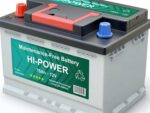In this section we focus on all the technologies that can be used to generate energy in a domestic setting. This energy can be either heat or electricity. It can be generated from the sun, wind, the air or even ground around your home, or by burning organic material (Biomass).
We cover the grants and schemes such as the Feed in Tariff or Renewable Heat Incentive in a section dedicated to these Green Energy Schemes . Other green and eco friendly projects that we cover are in another section which includes topics such as rain water harvesting and composting toilets (and many more).
Why the Interest in Generating Energy at Home?
There has been a keen interested in solutions that can generate energy in an eco-friendly way, particularly in a domestic setting, ever since we became aware of the hazard that global warming causes. Successive governments introduced schemes and incentives to boost the uptake of these solutions, which on the whole were considerably more expensive per unit of energy they produced than traditional centralised energy generation for domestic use.

This fuelled a boom in their uptake (particularly Solar PV with the Feed-in-Tariff), and a crash when the incentives have all but been withdrawn following the last financial crisis. The aim was to seed the industry so that it could become established and start to become comparable pricewise with the centralised generation of energy in big power stations.
Largely this has happened or is beginning to happen. Solar PV (Solar electricity) is approaching grid parity or put another way, a unit of electricity generated by solar PV is nearly the same cost as that generated by other sources and fed into the grid.
Domestic Energy Generating Solutions Explained
The energy that is produced by these solutions is either electricity or heat. The reason that they are being encouraged is because the energy comes from renewable sources such as the sun or wind. As the energy from the sun and wind is free and unlimited (so much as it is available), this means that there is no damage to the environment if the conversion can be efficient.
These are the Electricity producing Solutions:
- Solar PV – Solar Photovoltaic, which are the solar panels usually placed on roofs and in fields that produce electricity from sunlight
- Wind – Using wind turbines it is possible to convert wind energy into electricity
- CHP – Combined Heat and Power, this is a special boiler that while it generates hot water for heating and hot water, it also create electricity too

The solutions that generate Heat are:
- Solar Thermal – these are solar panels that capture the suns heat to warm water. They are typically tubes set into panels
- Heat Pumps – These are heat exchanges which take the heat from either the air or ground outside your home and concentrate it to heat the inside. Rather like a fridge in reverse
- Biomass – there’s nothing new about burning organic material such as wood or wood pellets to generate heat, except that it is now much more efficient. The reason this is considered eco-friendly and renewable is that more trees can be planted to replace those which have been burnt

There are other solutions which attract grants and government incentives, however these do not actually generate energy. They tend to be energy saving solutions such as insulation or improved heating controls, which we cover in another section.



